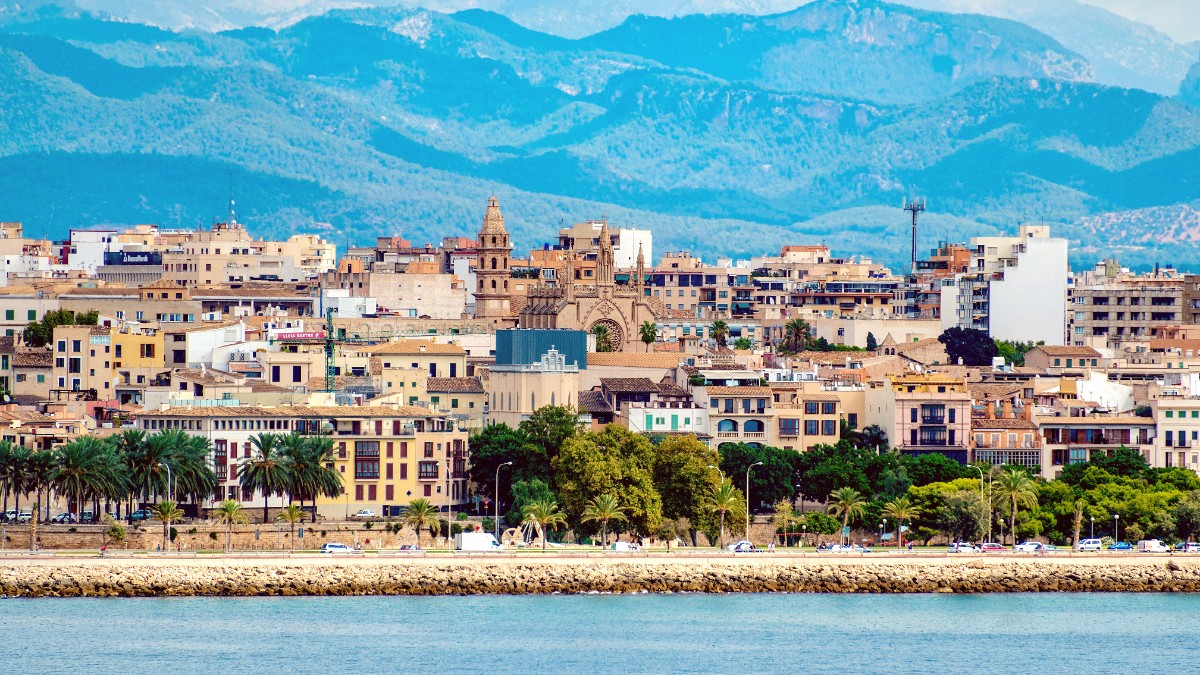
Spain
La Seu Cathedral, a magnificent Gothic Roman Catholic cathedral, began construction in 1229. Its interior features elements by Antoni Gaudí, and it boasts one of the world's largest rose windows, "The Gothic Eye."
The Royal Palace of La Almudaina, adjacent to La Seu, started as a Moorish fortress and became a Gothic palace. It remains a residence and is used by the Spanish Royal Family.
These landmarks present a deep dive into Palma's rich history and public life.
Wander through labyrinthine alleys to discover hidden courtyards (Patios), historic buildings, and charming squares.
Remains of a Moorish bathhouse, offering a rare glimpse into Palma's Islamic past within a garden setting.
A historic area within the Old Town that once housed Palma's Jewish community. Its narrow street layout retains historical significance.
Sections of Palma's old city walls remain, notably near Es Baluard museum and Parc de la Mar, offering insight into its defensive past.
Each site presents an opportunity to connect with different periods of Palma's extensive history.
Beyond its urban core, Palma features appealing natural spaces for relaxation and recreation.
A large urban park between La Seu Cathedral and the sea. Features an artificial lake mirroring the Cathedral, palm trees, and recreational areas. Popular for relaxation and picnics.
The closest urban beach to the city center. Easily accessible on foot or by bus, offering sand and sea for a quick dip or sunbathing.
A bit further east along the coast, a pleasant sandy beach with a lovely promenade, popular with families.
A charming area, formerly a fishing village, now popular for its small coves, cycling paths, and appealing seafood restaurants along the waterfront.
These natural spots present opportunities for relaxation, sunbathing, or a stroll along the promenade.
Palma's beaches are easily accessible from the city center, offering urban convenience with seaside leisure.
Parc de la Mar is a popular urban park for relaxation and enjoying scenic views of the Cathedral.
Can Pere Antoni offers the closest beach access, ideal for a quick dip or sunbathing near the city center.
Portixol and Ciudad Jardín feature charming promenades perfect for cycling, walking, and seaside dining.
For unique experiences beyond the main tourist circuit, Palma holds several hidden treasures.
Walk Palma's Old Town without a map for a while. Allow yourself to get lost in its alleys; unexpected discoveries are often the most rewarding.
The intricate street plan and hidden corners present an unique experience, revealing the city's charm beyond the main attractions.
These often hidden architectural jewels present tranquil beauty within historic noble houses.
This beautiful Gothic church and its serene cloister present a peaceful escape.
Palma's largest indoor food market is more than just a place to buy fresh food.
This charming small square is home to Palma's Town Hall and a beautiful, ancient olive tree.
Palma's history is visible in its architecture and urban fabric. Each corner reveals a story from its diverse past.
A rare glimpse into Palma's Islamic past within a serene garden setting.
Explore the narrow streets of this historic area, once home to Palma's Jewish community.
Walk along preserved sections of the old city walls, offering a sense of Palma's defensive history.
Modern and contemporary art within old city walls. Terraces present stunning views.
Visit Es Baluard WebsiteArchaeological finds, ethnology, and fine arts spanning Mallorca's history.
Visit Museu de Mallorca WebsiteDedicated to Joan Miró, preserving his studios and featuring a sculpture garden.
Visit Fundació Miró WebsiteMuseums offer deep insights into the island's rich and layered past.
Book Museum TicketsFrom ancient artifacts to contemporary masterpieces, Palma's museums cater to diverse artistic interests.
Explore Cultural ToursPalma's most recognized attractions are essential for understanding its heritage.
Enjoy Palma's natural side with urban parks and accessible beaches.
Consider a Palma Pass for discounted entry to multiple attractions.
Check opening hours and holiday schedules in advance, specifically for smaller museums and patios.
Discover Palma's lesser-known but equally captivating spots. These locations present a connection to the city's unique charm and history.
Many historic noble houses in the Old Town feature stunning inner courtyards.
Beyond a shopping spot, this market is a cultural experience.
This beautiful Gothic church and its serene cloister present a peaceful escape.
A perfect spot for tranquility and appreciating historical artistry.
This charming small square is home to Palma's Town Hall and a beautiful, ancient olive tree.
This spot is often overlooked by visitors rushing between major sites, but it offers a genuine slice of Palma's daily rhythm.
This historic area within the Old Town once housed Palma’s Jewish community.
A significant area for those interested in the multicultural heritage of Palma.
Allow yourself to wander without a map in the Old Town; the most rewarding discoveries are often found this way.
Engage with locals in smaller shops or cafes for personal recommendations on hidden spots.
Visit popular sites early in the morning to experience them in greater tranquility before crowds arrive.